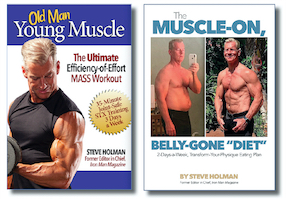Here’s a quote from respected hypertrophy researcher Chris Beardsley on volume as you become more advanced…
It is generally assumed that advanced lifters need higher workout volumes to cause hypertrophy. But is this true? During any strength training workout, central nervous system (CNS) fatigue builds up gradually. So the later sets cannot achieve as high levels of motor unit recruitment as the earlier sets. Calcium-ion-related fatigue also builds up gradually, preferentially affecting the least oxidative fast-twitch fibers of the highest high-threshold motor units. So, the later sets cannot achieve as high levels of mechanical tension in those fast-twitch muscle fibers. The progression of these fatigue mechanisms over a workout is one of the reasons why the dose-response of hypertrophy to training volume is not linear (such as 3 sets do not cause 3 times as much hypertrophy as 1 set). Yet, it is also possible that training status affects which muscle fibers in a muscle are capable of growth. It is known that even untrained people cannot cause growth in muscle fibers of low-threshold motor units, as they have already reached their maximum possible size. Thus, when beginners become intermediates, they could display a reduction in the rate of hypertrophy because the lowest group of high-threshold motor units reaches a plateau in size. When intermediates become advanced, they could similarly reach a plateau in the middle group of high-threshold motor units, leaving them only with the ability to cause growth in the highest group. Since the highest group is the most susceptible to CNS fatigue and calcium-ion-related fatigue, it suggests that high volumes are unlikely to be useful for advanced lifters. Finding ways to maximize motor unit recruitment levels is likely to be a far more valuable strategy.
So he’s saying that volume may need to DECREASE as you get into the advanced stages, but with workouts that somehow reach the highest threshold motor units quickly in only a few sets.
Interesting that Mike Mentzer toward the end of his competitive career reduced his volume to only one or two sets per muscle but with an intense rest/pause method…
Mentzer would take a heavy poundage that allowed one good single. He would rest for 10 seconds, then attempt another single. If he was unable to get it on his own, his training partner or partners helped.
He would rest another 10 seconds, reduce the weight, then do another single. After another 10-second rest, he did one last single—with help if needed.
So four all-out single reps separated by very short rests. That’s all well and good if you’re in your 20s. That is complete dumb-fuckery for older trainees or even those with less-than-stellar genetics. An ambulance ride is almost guaranteed.
A better, safer way is with STX. Use a high-rep set to warm up the muscle as well as fatigue the slow-twitch fibers (low-threshold motor units). Then after a short rest follow with the same weight using a Speed Set—1.5-second reps. That will bring in the high-threshold motor units immediately.
Follow with a specific add-on exercise or two maintaining the short rests between sets, and you’ve stimulated your high-threshold motor units in four sets using only moderate poundages. It’s efficient, precise, safe mass building no matter what your level of training experience.
OMYM is your efficient fast-mass blueprint: Learn how to accelerate your mass gains with the STX method, Speed Sets, and complete ideal-exercise-based training. The 35-minute workouts also include the best stretch and contracted add-on moves. Get Old Man, Young Muscle.
And you still get The Muscle-On, Belly-Gone “Diet” ebook FREE for a limited time when you add Old Man, Young Muscle to your mass-building library. Go HERE.

